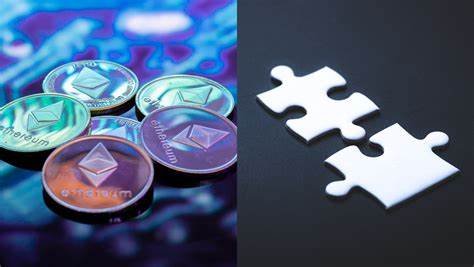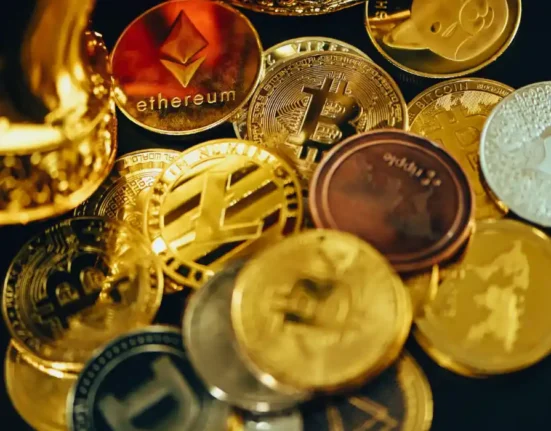The cryptocurrency world is more than just Bitcoin and Ethereum; it’s a gateway to financial freedom and innovation. In 2025, the pace of technological advancement in the crypto space is not just rapid—it’s revolutionary. From cutting-edge blockchain innovations to transformative applications of artificial intelligence, the crypto industry is reshaping how we think about money, technology, and even ownership. This is your chance to not just observe but to participate in this exciting era of change.
The Rise of Blockchain Scalability: Transforming Speed and Accessibility
For years, the crypto industry has been constrained by scalability issues. Slow transaction speeds, network congestion, and high fees were often the trade-offs for achieving decentralization and security. These challenges hindered mainstream adoption, making everyday use of cryptocurrencies seem impractical. However, recent breakthroughs in blockchain scalability are changing the game, paving the way for faster, cheaper, and more accessible blockchain networks.
How Scalability Solutions Are Revolutionizing Blockchain
Innovations such as rollups, sharding, and sidechains have emerged as transformative solutions to scalability bottlenecks. Rollups, for instance, allow multiple transactions to be bundled together and processed off-chain before being verified on the main blockchain. This reduces the computational load on the network while significantly increasing transaction throughput. Sharding, on the other hand, divides the blockchain into smaller segments, enabling parallel processing of transactions across multiple nodes, thereby enhancing speed and efficiency.
Sidechains, such as Polygon for Ethereum, operate alongside the main blockchain, handling transactions independently while remaining connected to the parent chain. These technologies collectively enable blockchain networks to process thousands—even tens of thousands—of transactions per second. This is a stark contrast to earlier limitations, such as Bitcoin’s 7 transactions per second or Ethereum’s pre-upgrade 15 transactions per second.
Everyday Implications: Crypto as a Payment Method
The practical implications of these advancements are profound. Imagine a world where buying a cup of coffee with cryptocurrency is as quick and seamless as swiping a credit card. Low transaction fees ensure that even microtransactions are economically viable, removing the barriers that previously limited cryptocurrencies to niche or large-scale transactions. This scalability is making cryptocurrencies more appealing to merchants and consumers alike, positioning them as legitimate contenders in the global payments ecosystem.
Empowering Businesses and Developers
Scalability innovations don’t just benefit individual users—they’re also a boon for enterprises and developers. For small businesses, the ability to accept crypto payments without worrying about high fees or long confirmation times opens the door to a new customer base. For developers, scalable blockchain networks provide a robust foundation for creating decentralized applications (dApps) that can handle high volumes of users without compromising on performance or affordability.
Platforms like Ethereum’s Layer 2 solutions and Solana, known for their high throughput and low costs, are empowering entrepreneurs to build everything from decentralized finance (DeFi) platforms to blockchain-based games. These advancements reduce entry barriers, enabling businesses and developers to participate in the crypto ecosystem without prohibitive costs or technical challenges.
The Path to Mainstream Adoption
Scalability is the missing piece of the puzzle for blockchain’s mainstream adoption. With faster transaction speeds, lower costs, and enhanced user experiences, the future of crypto is more accessible than ever. Whether you’re a consumer, a merchant, or a developer, the opportunities unlocked by scalability innovations are limitless.
Blockchain scalability is more than a technical improvement—it’s a paradigm shift that’s reshaping how we think about digital currencies and decentralized systems. As these technologies continue to mature, they’ll transform blockchain from a niche innovation into a cornerstone of global commerce and digital interaction.
Decentralized Finance 2.0: Revolutionizing Financial Independence
Decentralized Finance, or DeFi, has entered a new era. What began as a disruptive movement to bypass traditional banks has evolved into a sophisticated financial ecosystem that prioritizes sustainability, accessibility, and inclusivity. Welcome to DeFi 2.0—an upgraded version of decentralized finance that addresses the shortcomings of its predecessor while empowering users with innovative tools to achieve financial independence.
DeFi 2.0: A More Sustainable Ecosystem
The early days of DeFi offered groundbreaking solutions like decentralized lending, borrowing, and trading, but they came with challenges such as high fees, impermanent loss in liquidity pools, and significant risks tied to market volatility. DeFi 2.0 is built to resolve these pain points. New protocols are introducing algorithmic risk management to reduce exposure to impermanent loss and ensure that liquidity providers earn better and more predictable yields.
Sustainability is also a key focus. Incentive structures are being redesigned to minimize excessive token emissions, which previously led to unsustainable ecosystems. DeFi 2.0 protocols now emphasize long-term viability, offering users consistent rewards without destabilizing the platform’s native token economy.
Enhanced Accessibility: Finance for Everyone
One of the most significant advancements in DeFi 2.0 is its accessibility. Earlier versions of DeFi were often criticized for being overly complex, requiring users to navigate clunky interfaces and understand advanced technical concepts. Today, user-friendly interfaces are making DeFi tools accessible to everyone, regardless of their technical expertise.
Want to earn passive income? DeFi 2.0 enables users to invest in yield-generating protocols with minimal effort. Platforms now offer clear tutorials, streamlined onboarding processes, and intuitive dashboards, making it easier for newcomers to participate. Whether you’re adding liquidity to a pool, staking your assets, or taking out a decentralized loan, the barriers to entry have been significantly reduced.
Lower Capital Requirements, Greater Participation
DeFi 2.0 is democratizing finance by reducing the capital required to participate in high-yield opportunities. Earlier DeFi protocols often favored users with significant assets, leaving smaller investors on the sidelines. Innovations like layered yield farming and tokenized access to liquidity pools allow users with limited funds to enjoy competitive returns. Fractional ownership of liquidity pools is also becoming more prevalent, enabling participants to invest small amounts while still benefiting from the pool’s overall performance.
Revolutionizing Financial Tools
The financial tools available in DeFi 2.0 go far beyond simple lending and borrowing. Users can now:
- Participate in advanced automated market-making (AMM) protocols to optimize returns on their liquidity contributions.
- Take advantage of self-repaying loans that use yield from collateralized assets to pay off the principal automatically.
- Explore synthetic assets, which allow investors to gain exposure to traditional markets, such as stocks or commodities, without leaving the blockchain ecosystem.
DeFi 2.0 also incorporates cross-chain compatibility, breaking down silos between different blockchain networks. This creates seamless interoperability, enabling users to transfer assets and interact with protocols across multiple chains with minimal friction.
The Future: Decentralized Finance for All
DeFi 2.0 is more than a collection of tools—it’s a financial revolution that puts power back into the hands of individuals. By addressing the inefficiencies and risks of its earlier iterations, it offers a more inclusive, sustainable, and user-friendly environment for everyone to participate.
In this new landscape, you don’t need a bank to grow your wealth or access advanced financial tools. With DeFi 2.0, the future of finance is decentralized, secure, and accessible to all. Whether you’re a seasoned investor or someone just starting your financial journey, the opportunities to achieve true financial independence have never been greater.
Now is the time to explore the possibilities of DeFi 2.0 and embrace a financial future where you are in control. Start learning, experimenting, and building your wealth today—because the decentralized economy isn’t just the future, it’s here now.
The Convergence of Artificial Intelligence and Blockchain
In 2025, two transformative technologies—artificial intelligence (AI) and blockchain—are reshaping the digital landscape. The fusion of these innovations is driving advancements in security, efficiency, automation, and user experience, making blockchain ecosystems smarter, more resilient, and more accessible than ever.
AI-Driven Innovations in Blockchain
Artificial intelligence is rapidly becoming a cornerstone of blockchain technology, enhancing its capabilities in numerous ways:
- Smarter Trading with AI Bots: AI-powered trading bots are revolutionizing the way investors interact with crypto markets. These bots use advanced algorithms and machine learning to analyze market trends, identify patterns, and execute trades in real-time. By removing human emotion and leveraging data-driven insights, AI bots help investors optimize their portfolios and capitalize on market opportunities.
- Fraud Prevention and Security: Blockchain networks are using AI algorithms to strengthen their defenses against fraud. AI can detect unusual patterns in transaction data, flagging potentially fraudulent activities before they escalate. This integration is vital for ensuring the security and integrity of decentralized financial systems, making blockchain networks more trustworthy.
- Scalability and Optimization: AI algorithms are being applied to solve one of blockchain’s biggest challenges: scalability. From optimizing resource allocation to predicting network congestion, AI is enabling blockchain systems to process transactions more efficiently, reducing costs and enhancing the user experience.
Enhanced User Experiences
The convergence of AI and blockchain isn’t just about back-end improvements; it’s also transforming how users interact with crypto platforms:
- Personalized Dashboards: AI enhances user experiences by providing personalized dashboards that adapt to individual preferences and behaviors. Whether you’re a beginner navigating your first crypto wallet or an experienced trader managing multiple assets, AI-powered interfaces make the process intuitive and tailored to your needs.
- Streamlined Onboarding: For newcomers, crypto platforms often feel overwhelming. AI simplifies the onboarding process by guiding users through setup, answering questions, and offering personalized recommendations for wallets, exchanges, or DeFi protocols.
- Voice and Chat Interfaces: The integration of AI-powered voice and chat assistants on blockchain platforms is breaking down technical barriers. Users can now execute transactions, check balances, and explore investment opportunities using natural language commands, making blockchain technology more accessible to non-technical audiences.
Opportunities in AI-Blockchain Integration
For entrepreneurs, developers, and investors, the integration of AI and blockchain opens up a wealth of opportunities:
- Building AI-Driven Blockchain Applications: Developers can harness the power of AI to create decentralized applications (dApps) that offer advanced analytics, automated compliance, or predictive modeling. These applications are particularly valuable in industries like healthcare, supply chain, and finance.
- Optimizing Investments: AI tools are not limited to trading bots; they can also assist investors in diversifying portfolios, identifying emerging tokens, and forecasting market trends. AI-powered analytics platforms are becoming indispensable for both retail and institutional investors.
- Tokenizing AI Models: Blockchain enables the tokenization of AI models, allowing developers to monetize their algorithms. Through decentralized marketplaces, AI developers can offer their models to businesses and individuals, creating new revenue streams and democratizing access to cutting-edge AI.
A Future of Endless Possibilities
The synergy between AI and blockchain is laying the foundation for a future where digital systems are more intelligent, secure, and efficient. These technologies complement each other: AI brings adaptability and foresight, while blockchain ensures transparency and trust. Together, they are transforming industries, driving innovation, and creating opportunities for individuals and organizations alike.
Whether you’re an investor looking to optimize your strategies or a developer eager to build the next groundbreaking application, now is the time to explore the potential of AI-blockchain integration. As these technologies continue to evolve, their convergence will redefine the possibilities of the digital economy—and those who embrace this transformation will be at the forefront of a new technological era.
Tokenized Assets: Democratizing Wealth Building
The tokenization of real-world assets has emerged as one of the most transformative financial innovations of 2025. This cutting-edge technology is unlocking new opportunities by converting tangible items—such as real estate, fine art, precious metals, and even stocks—into digital tokens on blockchain platforms. These tokens can be bought, sold, or traded, just like cryptocurrencies, enabling fractional ownership and democratizing access to investment opportunities that were once out of reach for most people.
The Rise of Fractional Ownership
The traditional investment landscape has long been dominated by high barriers to entry. For example, purchasing a luxury property or investing in rare art requires significant capital, often beyond the means of average investors. Tokenized assets solve this problem by allowing investors to buy fractions of these high-value assets, opening up wealth-building opportunities for a much larger group of people.
With tokenization, investors can own a small share of a multi-million dollar property or a piece of a world-renowned artwork, benefiting from its appreciation over time. This fractional ownership model makes it possible for anyone—regardless of their financial status—to participate in asset classes that were previously reserved for the ultra-wealthy.
Expanding Investment Horizons
Tokenization isn’t limited to just real estate or art; it’s transforming the way we think about all types of investments. Here’s how:
- Real Estate: Tokenizing real estate allows people to invest in prime properties across the globe. Rather than needing a large sum of money to purchase an entire building, investors can own a token that represents a share in the property, enabling them to earn rental income or profit from its appreciation.
- Fine Art: Rare and expensive artworks, which have traditionally been exclusive to wealthy collectors and institutions, are now accessible to a global pool of investors. Fractional ownership of art allows multiple people to buy shares in a masterpiece, benefiting from its rising value without the need to purchase the entire piece.
- Stocks and Bonds: Tokenized stocks and bonds are revolutionizing the stock market. Investors can trade tokenized versions of publicly listed companies or even bonds, making it easier to diversify their portfolios and trade across borders without the barriers of traditional stock exchanges.
Empowering Entrepreneurs and Creators
Beyond individual investors, tokenized assets are also a game-changer for entrepreneurs and creators. Here’s how:
- Fundraising for Startups: Entrepreneurs can tokenize their businesses, allowing them to raise capital by selling tokens representing ownership shares or future profits. This provides a more efficient and transparent alternative to traditional venture capital or crowdfunding, enabling businesses to raise funds from a global pool of investors.
- Monetizing Creativity: For artists, musicians, and content creators, tokenization opens up new ways to monetize their work. By creating and selling tokens linked to their creations, creators can receive a share of profits each time their token is sold or traded, ensuring they continue to benefit as their work gains value.
Advantages of Tokenized Assets
Tokenization offers a host of benefits that make it an attractive option for both investors and entrepreneurs:
- Increased Liquidity: Tokenized assets can be traded on blockchain-based platforms, offering greater liquidity than traditional investments, which are often illiquid or difficult to sell. Investors can easily buy and sell shares of tokenized assets at any time, creating more dynamic and accessible markets.
- Transparency and Security: Blockchain technology provides transparency and security, ensuring that all transactions related to tokenized assets are recorded on a public ledger. This reduces the risk of fraud and provides clear proof of ownership for each token holder.
- Global Access: Tokenized assets can be bought and sold across borders without the need for intermediaries, creating a truly global marketplace. Investors from anywhere in the world can access high-value assets, enabling more inclusive wealth-building opportunities.
- Lower Costs: By eliminating intermediaries such as banks, brokers, and real estate agents, tokenization reduces transaction fees and administrative costs, making investments more affordable for smaller investors.
The Future of Wealth Creation
Tokenization is not just about financial inclusion; it’s about creating a more equitable and efficient way to invest and build wealth. With blockchain technology, the entire world of investment is being brought closer to the average person, enabling individuals to access markets that were previously restricted to the wealthy elite.
As tokenization continues to expand, the possibilities for wealth creation become virtually limitless. Investors can diversify their portfolios across multiple asset classes, entrepreneurs can access capital more efficiently, and creators can monetize their work in innovative ways. Whether you’re an experienced investor or someone just beginning your financial journey, tokenized assets offer an exciting path to wealth creation and financial empowerment.
Why You Should Start Now
The tokenization revolution is still in its early stages, and the opportunities it presents are vast. By embracing this technology, you can position yourself ahead of the curve in the rapidly evolving world of finance. As the market grows, early adopters will have the chance to benefit from the increasing value of tokenized assets and the expanding range of investment options available.
If you’re looking to unlock the potential of tokenized assets, now is the time to explore the possibilities. Whether you’re interested in real estate, fine art, or even new types of digital assets, tokenization is making it easier than ever to build wealth and participate in the global economy. Get started today and join the growing movement toward democratizing wealth creation.
Privacy-Preserving Technologies: A New Era of Secure Transactions
As the digital world continues to expand, the need for robust privacy protection has become more pressing. In the fast-evolving landscape of blockchain technology, privacy has taken center stage in 2025, with innovations that allow individuals to engage in transactions without fear of exposure or compromise. Privacy-preserving technologies, such as zero-knowledge proofs and advanced cryptographic techniques, are playing a pivotal role in safeguarding personal data while ensuring the security of financial activities. These advancements are not only enhancing blockchain’s role in digital finance but are also contributing to a more secure and confidential digital economy.
The Rise of Privacy in Blockchain
For years, blockchain’s promise of decentralization and transparency has been tempered by concerns about user privacy. Although blockchain ledgers are immutable and open, this also meant that transaction details, including the amounts involved and the parties transacting, were publicly visible. While this transparency helps maintain accountability and security, it can also expose users to privacy risks.
In response to these concerns, blockchain developers have introduced privacy-preserving technologies that allow individuals to retain control over their personal information. These solutions are designed to offer the best of both worlds—transparency in the network and privacy for users. In 2025, these tools are empowering people to engage with blockchain-based platforms, knowing that their transactions and personal data are kept confidential.
Zero-Knowledge Proofs: The Foundation of Privacy
One of the most significant innovations in privacy-preserving blockchain technology is zero-knowledge proofs (ZKPs). ZKPs are cryptographic protocols that allow one party to prove to another that they know a piece of information—such as a transaction amount—without actually revealing the information itself. This means users can verify transactions without exposing sensitive details like the identity of the parties involved or the specific amounts being exchanged.
For example, in a typical financial transaction, the bank might know both the sender and the receiver, along with the amount being transferred. With ZKPs, however, the blockchain can confirm the validity of the transaction without exposing any of this information, ensuring that privacy is maintained throughout the process.
ZKPs have revolutionized the blockchain landscape by allowing users to engage in secure and anonymous transactions, making them a cornerstone of privacy-focused blockchain platforms. They are also being incorporated into privacy coins like Zcash and Monero, which are designed specifically to provide anonymous and untraceable transactions.
Advanced Cryptographic Techniques: Enhancing Privacy
In addition to ZKPs, a variety of other cryptographic techniques are improving privacy on blockchain networks. These include:
- Ring Signatures: Used by privacy-focused cryptocurrencies like Monero, ring signatures allow a transaction to be signed by a group of users, making it impossible to determine which specific user initiated the transaction. This ensures that even if the transaction is recorded on the blockchain, the identity of the sender remains concealed.
- Stealth Addresses: These are used to create temporary addresses for each transaction, meaning that a receiver’s address is never directly visible on the blockchain. This ensures that even if someone can access the transaction data, they will not be able to trace it back to the recipient.
- Homomorphic Encryption: This technique allows data to be processed and analyzed without revealing the underlying information. It enables secure computation of sensitive data while preserving privacy, making it especially useful for applications in finance and healthcare.
These cryptographic techniques are helping to create blockchain systems that not only protect users’ identities but also allow for private transactions without sacrificing the integrity or security of the network.
The Need for Privacy in a Digital World
As data breaches, cyber threats, and surveillance practices become increasingly common in today’s digital age, the demand for privacy has never been greater. In the context of blockchain and cryptocurrencies, privacy is not just about protecting financial transactions; it’s about safeguarding personal data, identity, and freedom. Whether it’s buying goods with cryptocurrency, transferring funds across borders, or participating in decentralized finance (DeFi), users want to be assured that their financial activities are not exposed to prying eyes.
Privacy-preserving technologies give individuals the confidence to participate in the digital economy without compromising their security. They allow for secure peer-to-peer transactions, ensure anonymous trading on decentralized exchanges, and provide the foundation for building privacy-conscious financial systems. These advancements are particularly important as more people turn to blockchain for everyday payments and financial services.
Real-World Use Cases for Privacy-Preserving Blockchain
- DeFi Platforms: Decentralized finance platforms have grown exponentially in recent years, offering new financial products and services to users. By integrating privacy-preserving technologies, DeFi platforms can offer anonymous lending, secure borrowing, and private trading without revealing users’ financial details to third parties.
- Cross-Border Payments: International transactions often come with long processing times, high fees, and exposure to regulatory scrutiny. Privacy-preserving blockchain technologies can make cross-border payments faster, cheaper, and more private, allowing users to send funds across borders without government surveillance or excessive fees.
- Supply Chain Management: Privacy is also essential in supply chain management, where sensitive business information is often exchanged between parties. By using blockchain with privacy-enhancing technologies, companies can track goods and verify their origins while keeping critical business information confidential.
- Health Data Protection: Healthcare data is one of the most sensitive forms of personal information, making privacy-preserving blockchain technologies crucial for the future of healthcare record management. By leveraging encryption and ZKPs, blockchain can be used to manage patient data while ensuring that only authorized parties have access to the information.
The Future of Privacy in Blockchain
As blockchain technology continues to mature, the integration of privacy-preserving features will play a crucial role in making the digital economy more secure and inclusive. In the coming years, we can expect to see even more advanced cryptographic techniques and protocols that prioritize user privacy while maintaining the transparency and security of the blockchain.
For individuals and businesses looking to stay ahead of the curve, understanding these technologies and how they can be leveraged will be key. Whether you’re investing in privacy coins, participating in DeFi platforms, or simply making private transactions, privacy-preserving technologies will be at the forefront of ensuring that your digital interactions remain secure, confidential, and free from unnecessary surveillance.
In conclusion, privacy-preserving blockchain technologies are not just a necessity—they are a new standard for secure, anonymous, and efficient digital transactions. With these innovations, blockchain can continue to empower users with financial freedom while protecting their personal information, making it a cornerstone of the next generation of the digital economy.
Education and Participation: Keys to Unlocking the Potential
The world of blockchain, decentralized finance (DeFi), tokenized assets, and privacy-preserving technologies is rapidly evolving, and 2025 presents an exciting opportunity for those who are ready to dive in. However, these innovations are only truly powerful when individuals engage with them directly. The key to unlocking the full potential of these technologies lies in two main factors: education and active participation. By taking the time to educate yourself and gaining hands-on experience, you can position yourself to benefit from the transformative changes happening in the digital economy.
The Importance of Education
Education serves as the foundation for understanding the complexities of blockchain technology and its many applications. As these technologies continue to gain traction, there is an ever-growing need for individuals to grasp how they work and how they can be utilized in various aspects of life and business. Fortunately, access to educational resources has never been easier, with a wealth of free online courses, webinars, podcasts, and community forums available at your fingertips.
- Free Resources and Online Courses: Whether you’re new to blockchain or looking to deepen your knowledge, numerous platforms offer free and paid courses that explain everything from the basics of cryptocurrency to advanced blockchain development. Websites like Coursera, edX, and Udemy offer courses that can help you understand key concepts such as smart contracts, decentralized finance, and tokenization. These resources break down complex topics into digestible lessons, making it easier for beginners to get started.
- Community Forums and Online Groups: Blockchain and crypto communities are extremely active, with countless forums and social media groups dedicated to discussing the latest developments, sharing knowledge, and answering questions. Platforms like Reddit, Discord, and Telegram host vibrant communities where users can ask questions, share insights, and participate in discussions. These forums often offer real-time updates on trends and emerging technologies, helping you stay ahead in this fast-paced industry.
- Webinars and Conferences: Participating in webinars, virtual conferences, and industry meetups can provide access to expert insights and networking opportunities. Many of these events are free or affordable, and they give you the chance to learn directly from thought leaders, developers, and investors who are at the forefront of blockchain technology.
Taking Action: Learning by Doing
While education is essential, practical experience is the best way to solidify your knowledge and develop confidence in using these technologies. The crypto and blockchain space thrives on innovation, and the only way to truly understand how these systems work is by actively engaging with them. The best part is that you can start small and learn as you go, minimizing risk while gaining valuable experience.
- Start Small with Investments: If you’re interested in cryptocurrencies, you don’t need to dive in with large sums of money right away. Start with small investments in widely recognized digital assets like Bitcoin, Ethereum, or stablecoins. By making small, manageable investments, you can learn the ropes of buying, selling, and storing cryptocurrencies without taking on excessive risk. This also helps you get familiar with how crypto wallets, exchanges, and transaction fees work.
- Experiment with DeFi Platforms: Decentralized finance (DeFi) platforms offer an array of opportunities, from lending and borrowing to liquidity mining and staking. Many DeFi platforms now have user-friendly interfaces designed for newcomers. By starting with low-risk opportunities like yield farming or staking, you can test the waters and begin understanding how decentralized applications (dApps) operate. Platforms such as Aave, Compound, and Uniswap offer intuitive tools to help you participate in DeFi with ease.
- Join Blockchain Communities: The blockchain community is incredibly welcoming and full of opportunities to learn through collaboration. By joining blockchain-based social networks and online communities, you can stay informed about industry developments, connect with like-minded individuals, and share experiences. Networking with others who are exploring the same technologies can help accelerate your learning curve, providing you with valuable insights and feedback.
- Experiment with NFT Creation and Trading: For creative individuals, NFTs (non-fungible tokens) present an exciting opportunity to participate in the blockchain ecosystem. Platforms like OpenSea and Rarible allow users to mint, buy, and sell NFTs. By creating your own NFTs—whether they are digital art, music, or collectibles—you can learn about blockchain’s potential for asset tokenization and how to participate in the rapidly growing NFT market. NFTs are a great way to explore blockchain technology in a hands-on, creative way.
- Start Building: For those interested in a deeper dive, learning how to develop decentralized applications (dApps) or smart contracts can be a rewarding next step. There are resources available to help you learn coding languages like Solidity for Ethereum or Rust for Solana, which are used to build blockchain-based applications. By building dApps or smart contracts, you can contribute to the decentralized ecosystem while gaining practical experience that could turn into a career in blockchain development.
The Crypto Space: Open to All
The beauty of the crypto and blockchain world is that it is accessible to everyone—from entrepreneurs and developers to creatives and casual investors. The blockchain space thrives on curiosity, and as long as you’re willing to take the initiative, there is ample opportunity to explore, learn, and grow.
By educating yourself, participating in communities, and experimenting with new technologies, you can unlock the full potential of blockchain and its many applications. The innovations of 2025 are just the beginning, and by getting involved now, you can position yourself at the forefront of this transformative wave. Whether you’re looking to invest, create, or build, the world of blockchain and decentralized technologies is wide open for exploration, and the only limit to your success is your willingness to engage and learn.
In conclusion, education and participation are the keys to unlocking the potential of blockchain and its associated technologies. With the right mindset and a willingness to take action, you can tap into the immense opportunities that blockchain offers, whether for personal growth, investment, or career development. So why wait? Start learning, start experimenting, and become a part of the blockchain revolution today.
What Are the Most Innovative Crypto Technologies Emerging in 2025 and How Can You Benefit from Them?
The cryptocurrency world is more than just Bitcoin and Ethereum; it’s a gateway to financial freedom and innovation. In 2025, the pace of technological advancement in the crypto space is not just rapid—it’s revolutionary. From cutting-edge blockchain innovations to transformative applications of artificial intelligence, the crypto industry is reshaping how we think about money, technology, and even ownership. This is your chance to not just observe but to participate in this exciting era of change.
The Rise of Blockchain Scalability: Transforming Speed and Accessibility
For years, the crypto industry grappled with scalability issues. Slow transaction speeds and high fees were the price of decentralization and security, but new solutions are rewriting the rulebook. Blockchain technologies like rollups, sharding, and sidechains have made it possible to process thousands of transactions per second while keeping costs low. Imagine a future where buying a cup of coffee with cryptocurrency is as fast and inexpensive as swiping a credit card. These advancements are laying the groundwork for crypto to become a mainstream payment method, eliminating barriers that previously limited its adoption.
Scalability innovations don’t just benefit individual users; they are enabling enterprises and developers to build scalable applications on blockchain networks. Whether you’re a small business owner looking to accept crypto payments or a developer creating decentralized applications, these technologies make it easier and more affordable than ever to engage with the crypto ecosystem.
Decentralized Finance 2.0: Revolutionizing Financial Independence
Decentralized finance, or DeFi, has undergone a dramatic evolution. Early versions of DeFi opened doors to lending, borrowing, and trading without the need for banks, but the landscape in 2025 has expanded its capabilities while addressing prior limitations. DeFi 2.0 is all about sustainability and accessibility. New protocols are introducing mechanisms to minimize risk and offer better yields while requiring less capital to participate.
For those new to the space, DeFi platforms now provide user-friendly interfaces that make it easier to access advanced financial tools. You can invest in yield-generating protocols, participate in liquidity pools, or even take out decentralized loans—all without needing advanced technical knowledge. The future of finance is decentralized, and these innovations allow you to take control of your financial journey without relying on traditional institutions.
The Convergence of Artificial Intelligence and Blockchain
Artificial intelligence is becoming a cornerstone of the crypto industry, driving advancements in security, efficiency, and automation. In 2025, AI and blockchain integration has created smarter, more resilient systems. AI-powered trading bots analyze market trends and execute trades on behalf of users, while blockchain networks leverage AI algorithms to detect and prevent fraudulent transactions.
This convergence is opening up a world of opportunities for those willing to explore it. Whether you’re interested in optimizing your investments or building AI-driven blockchain applications, the potential is enormous. The integration of these two technologies is also enhancing user experiences across crypto platforms, making them more intuitive for beginners and more powerful for experienced users.
Tokenized Assets: Democratizing Wealth Building
One of the most transformative innovations of 2025 is the tokenization of real-world assets. Tokenized assets convert tangible items—like real estate, fine art, and even stocks—into digital tokens that can be bought, sold, or traded on blockchain platforms. This technology is making investment opportunities accessible to a broader audience by enabling fractional ownership. You no longer need a fortune to invest in a luxury property or a valuable artwork; tokenization allows you to own a portion of these assets, creating new pathways to wealth creation.
For those with an entrepreneurial mindset, tokenized assets offer additional possibilities. Entrepreneurs can raise funds by tokenizing their businesses, while creators and artists can monetize their work in new and innovative ways. This shift is not only democratizing investment but also fostering creativity and economic empowerment.
Privacy-Preserving Technologies: A New Era of Secure Transactions
As the world becomes increasingly digital, privacy has emerged as a critical concern. Blockchain technology in 2025 has embraced privacy-preserving mechanisms to ensure secure and anonymous transactions. Zero-knowledge proofs and advanced cryptographic techniques are giving users control over their personal data, protecting their financial activities from prying eyes.
These technologies are particularly valuable in today’s digital age, where cyber threats and data breaches are becoming more common. By ensuring that transactions are both private and secure, blockchain is not just a financial tool but also a safeguard for personal data. Whether you’re trading, investing, or simply making everyday payments, privacy-preserving technologies give you the confidence to participate without compromising your security.
Education and Participation: Keys to Unlocking the Potential
While the innovations of 2025 are thrilling, their potential can only be fully realized through active participation. The first step is education. Understanding how these technologies work and how they can be applied to your life or business is critical. Free resources, online courses, and community forums provide a wealth of information to help you get started.
The second step is taking action. Experiment with small investments, try out decentralized platforms, or join blockchain-based communities. Practical experience is the best teacher, and starting small allows you to learn and grow without overwhelming risks. The crypto space thrives on innovation and curiosity, making it accessible to anyone willing to take the initiative.
Why 2025 Is the Year to Embrace Crypto Innovation
The year 2025 marks a turning point in the crypto industry. With technologies like scalable blockchains, AI integration, tokenized assets, and DeFi 2.0, the opportunities to participate and thrive are boundless. These innovations are making cryptocurrency more accessible, secure, and beneficial for a global audience, regardless of experience level.
This is your moment to take advantage of the crypto revolution. The future isn’t just happening; it’s being built, and you can be a part of it. Don’t wait until it’s too late to explore what crypto has to offer. Take the first step today by diving into this world of innovation, and secure your place in the digital economy of tomorrow.
For exclusive insights, educational resources, and expert guidance, visit epci.ng now. Sign up to gain access to everything you need to start your crypto journey and stay ahead in this rapidly evolving space.







Leave feedback about this